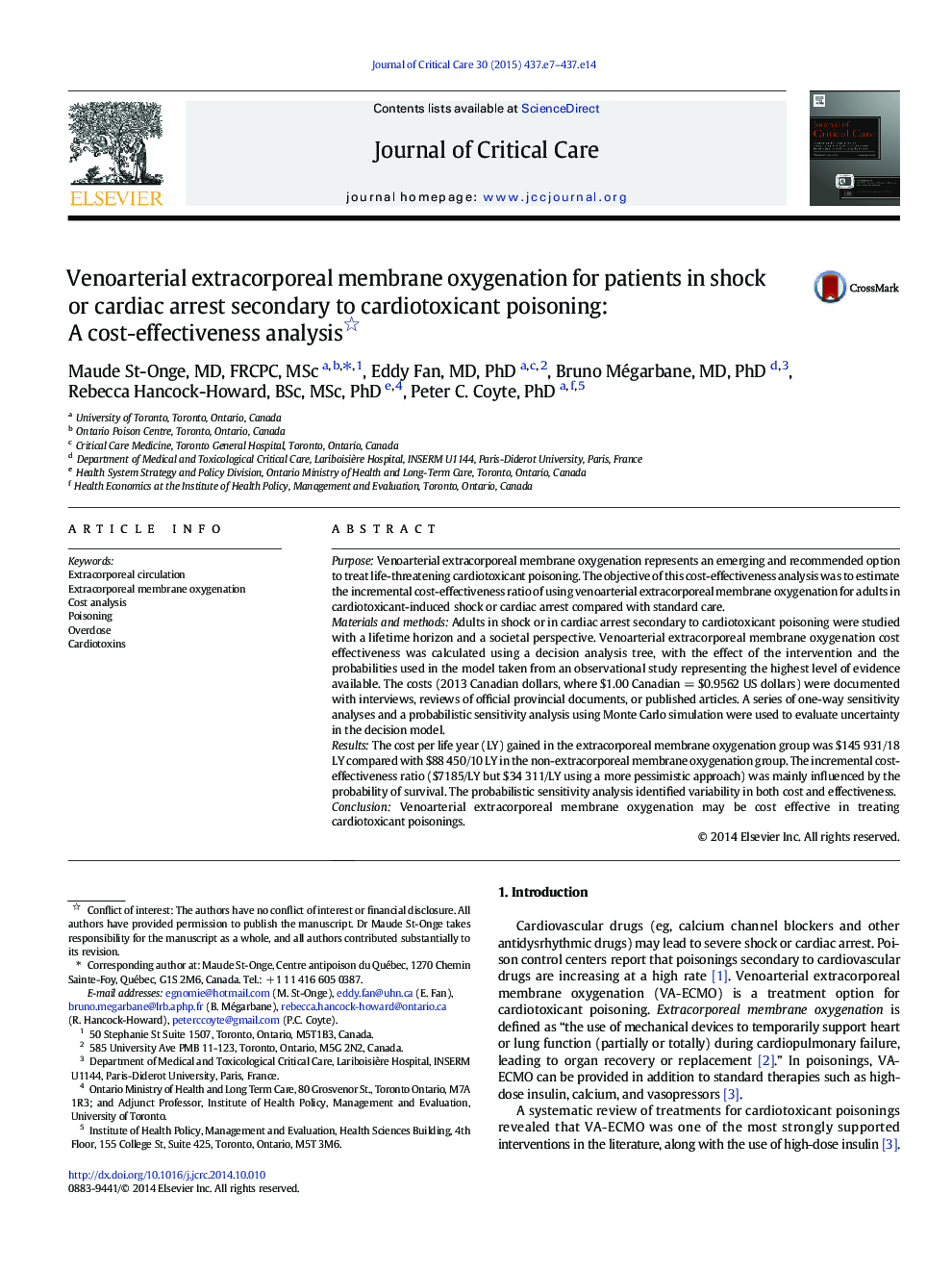| Article ID | Journal | Published Year | Pages | File Type |
|---|---|---|---|---|
| 5885553 | Journal of Critical Care | 2015 | 8 Pages |
PurposeVenoarterial extracorporeal membrane oxygenation represents an emerging and recommended option to treat life-threatening cardiotoxicant poisoning. The objective of this cost-effectiveness analysis was to estimate the incremental cost-effectiveness ratio of using venoarterial extracorporeal membrane oxygenation for adults in cardiotoxicant-induced shock or cardiac arrest compared with standard care.Materials and methodsAdults in shock or in cardiac arrest secondary to cardiotoxicant poisoning were studied with a lifetime horizon and a societal perspective. Venoarterial extracorporeal membrane oxygenation cost effectiveness was calculated using a decision analysis tree, with the effect of the intervention and the probabilities used in the model taken from an observational study representing the highest level of evidence available. The costs (2013 Canadian dollars, where $1.00 Canadian = $0.9562 US dollars) were documented with interviews, reviews of official provincial documents, or published articles. A series of one-way sensitivity analyses and a probabilistic sensitivity analysis using Monte Carlo simulation were used to evaluate uncertainty in the decision model.ResultsThe cost per life year (LY) gained in the extracorporeal membrane oxygenation group was $145 931/18 LY compared with $88 450/10 LY in the non-extracorporeal membrane oxygenation group. The incremental cost-effectiveness ratio ($7185/LY but $34 311/LY using a more pessimistic approach) was mainly influenced by the probability of survival. The probabilistic sensitivity analysis identified variability in both cost and effectiveness.ConclusionVenoarterial extracorporeal membrane oxygenation may be cost effective in treating cardiotoxicant poisonings.
